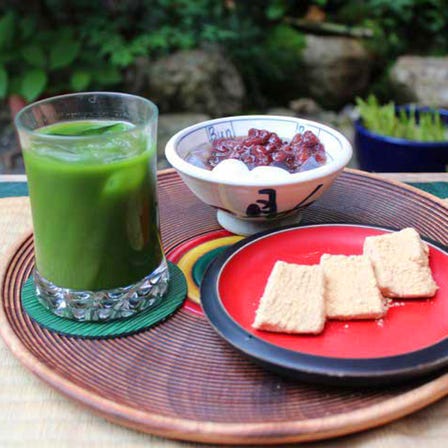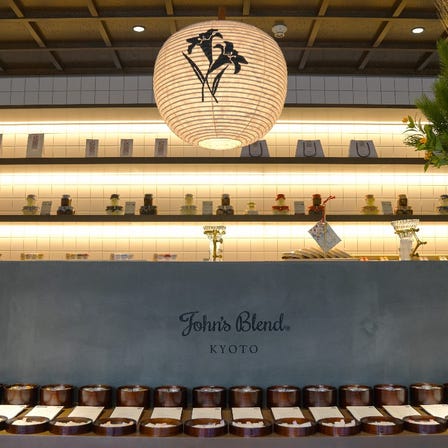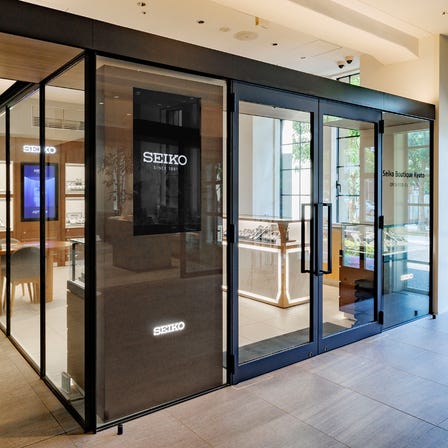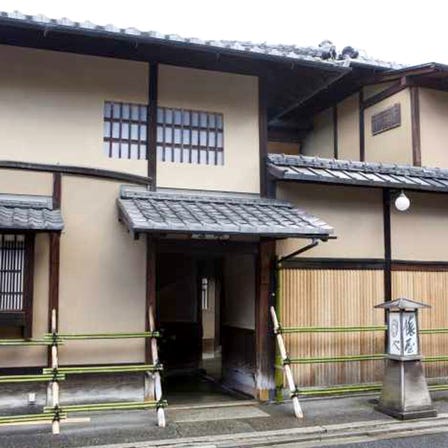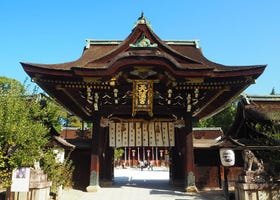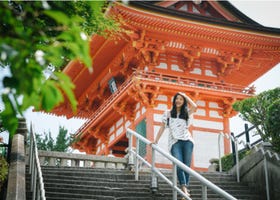Description
Yasaka-jinja Shrine sits at the east end of Shijo-dori, which is said to be Kyoto's main street. The Nishi-Ro-mon gate, which faces the Gion intersection, is a popular sightseeing spot among tourists. Yasaka-jinja Shrine pays homage to Susanoo-no-Mikoto and is the head shrine of all satellite shrines in Japan that honor the god. The name of the shrine was changed to Yasaka-jinja Shrine in 1868 when shrines and temples were separated, but it was originally called Gion-sha, so many people in Kyoto still call the shrine ”Gion-san.” The shrine hosts the annual Gion Festival, regarded as one of the three greatest festivals in Japan, and various Shinto rituals are held in the month of July.
・Gion Festival is known for its lively and festive musical rhythm known as konchikichin, honoring a long-standing tradition with a history of 1,150 years
Gion Festival dates back to a ritual called goryoe (prayers held to appease vengeful ghosts) held in 869 when Kyoto was hit by an epidemic. Today, it is regarded as one of the three greatest festivals in Japan and is also famous as one of Kyoto's largest festivals. Beginning with Kippu-iri (beginning of the festival) on July 1, various other rituals follow, such as Omukae Chochin (welcome lanterns) on the 10th, Yoiyama (small festival on the eve of the main festival) between the 14th and 16th, Yamahoko Junko (grand processions of floats) on the 17th, and the Yamahoko and Hanagasa Junko (flower hat procession) on the 24th. The sounds of a distinct musical rhythm known as konchikichin can be heard during these events throughout the Gion district. Some of the Gion Festival events are held by Yasaka-jinja Shrine, while others are held by each ward that possesses Yama floats or both Yama and Hoko floats.
・Okera-mairi held over New Year for people to bring home holy fire and wish for health and happiness
This New Year ritual is called Okera-mairi (Okera visit) and is held between December 31 and January 1. According to old traditions, the holy fire is lit inside Okera-toro (lanterns) on New Year's Eve and burnt all night along with Okera-gi (pieces of wood with inscriptions). Visitors use twisted bamboo ropes to transfer the fire and take it home with them. It is common to see visitors twirling their ropes to keep the flames alive during New Year in Kyoto.
・Utsukushi Gozen-sha Shrine is a popular site of worship among women who are praying for beauty. The beauty water is said to purify both body and mind...
There are many sessha (auxiliary shrines dedicated to a deity connected to that of the main shrine) and massha (small shrines belonging to the main shrine) within Yasaka-jinja Shrine, and Utsukushi Gozen-sha Shrine in particular is a very popular site of worship among women. This massha is dedicated to the three goddesses of Ichikishimahime-no-Mikoto, Takirihime-no-Mikoto, and Takitsuhime-no-Mikoto. As a shrine for wealth, performance art, and beauty, it is visited by many women including geiko and maiko from Gion. It is said that applying droplets of the beauty water trickling next to Utsukushi Gozen-sha Shrine will purify not only your skin, but also your heart.
Location Information
-
- Address
-
625, Gionmachikitagawa, Higashiyama-ku, Kyoto-shi, Kyoto, 605-0073
-
- Nearest Station
-
Gionshijo Station
・ Keihan Line
5 minutes on foot
-
- Phone Number
-
075-561-6155Available languagesonly in Japanese
-
- Closed
- None
-
- Public Site
- Official Site
Recommended Spots in Area
- Visiting
- Eating
- Shopping
- Lodgings
-
 Former Imperial Villa Nijo-jo CastleNijo Castle, Kyoto Imperial PalaceCastles
Former Imperial Villa Nijo-jo CastleNijo Castle, Kyoto Imperial PalaceCastles -
 Ninen-zakaGion, Kawaramachi, Kiyomizu-dera TempleHistorical Places
Ninen-zakaGion, Kawaramachi, Kiyomizu-dera TempleHistorical Places -
 Kiyomizu-dera TempleGion, Kawaramachi, Kiyomizu-dera TempleTemples
Kiyomizu-dera TempleGion, Kawaramachi, Kiyomizu-dera TempleTemples -
 Maruyama ParkGion, Kawaramachi, Kiyomizu-dera TempleParks
Maruyama ParkGion, Kawaramachi, Kiyomizu-dera TempleParks -
 The Yoshino Cherry Trees of the Philosopher’s WalkKyoto Station, To-ji TempleSpring
The Yoshino Cherry Trees of the Philosopher’s WalkKyoto Station, To-ji TempleSpring -
 Nishiki Market Shopping DistrictGion, Kawaramachi, Kiyomizu-dera TempleOther Sightseeing
Nishiki Market Shopping DistrictGion, Kawaramachi, Kiyomizu-dera TempleOther Sightseeing
-
Gionjaya Tabanenoshi ShinkyogokuGion, Kawaramachi, Kiyomizu-dera TempleOther Cafes and Sweets
-
GiontamejiroHachijoguchiKyoto Station, To-ji TempleSet Meal (Gozen)
-
Bunnosuke Chaya HontenGion, Kawaramachi, Kiyomizu-dera TempleOther Cafes and Sweets
-
ashiyaKyoto Station, To-ji TempleTeppanyaki
-
Kyoto Nama ChocolatGion, Kawaramachi, Kiyomizu-dera TempleChocolate
-
Sushi Tamahime KYOTOKyoto Station, To-ji TempleJapanese cuisine
-
Japan Culture & Character Shop Guf Kyoto storeGion, Kawaramachi, Kiyomizu-dera TempleGift Shops
-
John's Blend Kyoto Nishiki-Ichiba StoreGion, Kawaramachi, Kiyomizu-dera TempleOther Shopping
-
MUSASHI JAPAN Kyoto Sanjo Knife ShopGion, Kawaramachi, Kiyomizu-dera TempleHousehold Goods Stores
-
BUYSELL Kyoto Shijo-dori storeGion, Kawaramachi, Kiyomizu-dera TempleClothing Stores
-
MUSASHI JAPAN Kyoto Kiyomizu Knife ShopGion, Kawaramachi, Kiyomizu-dera TempleHousehold Goods Stores
-
Seiko Boutique KyotoGion, Kawaramachi, Kiyomizu-dera TempleJewelry Stores and Watch Shops
-
Yugen Kyoto ShijoKyoto Station, To-ji TempleHotels
-
Six Senses KyotoKyoto Station, To-ji TempleHotels
-
Tawaraya RyokanNijo Castle, Kyoto Imperial PalaceRyokan
-
Rinn Hostel MiyagawachoGion, Kawaramachi, Kiyomizu-dera TempleEconomy Hotels
-
DoubleTree by Hilton Kyoto StationKyoto Station, To-ji TempleHotels
-
Rinn Kyoto Gion ShinbashiGion, Kawaramachi, Kiyomizu-dera TempleHotels





















